-1.jpg?width=500&name=Image%20uploaded%20from%20iOS%20(1)-1.jpg)
Thanks to a twist of fate, and the turn of the astronomical gears, the path of today's eclipse traveled smack dab across the northern hills of Georgia near our historic Tate marble quarry, offering us a unique vantage point.
34° 25' N, 84° 22' W
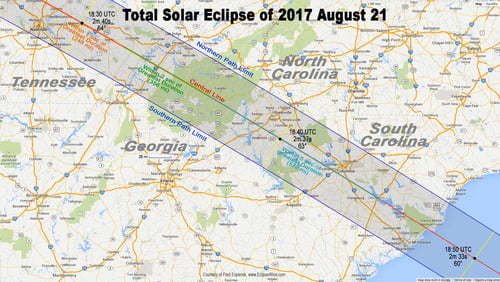
Back before Google Maps I remember using a LORAN (short for long range navigation) to track the position of our favorite fishing holes and this primitive radio navigation helped get us back to the sweet spot in the ocean. Finding my favorite white marble hole in Georgia was a little easier thanks to Rand McNally, but if you want to type it in, these are the GPS coordinates for Tate and they’re right in line with the eclipse’s southeast track over the nation.
.jpg?width=640&name=Eclipse%20(2%20of%2012).jpg)
Of 15 total eclipse events to affect a portion of the U.S. over the past 150 years, the only one that traversed the entire country coast-to-coast was back in 1918. The total solar eclipse of June 8, 1918 crossed the United States from Washington State to Florida, roughly similar to yesterday, and was the last time totality crossed the nation from the Pacific to the Atlantic (and the last time the Boston Red Sox beat the Chicago Cubs in the World Series until 2004).
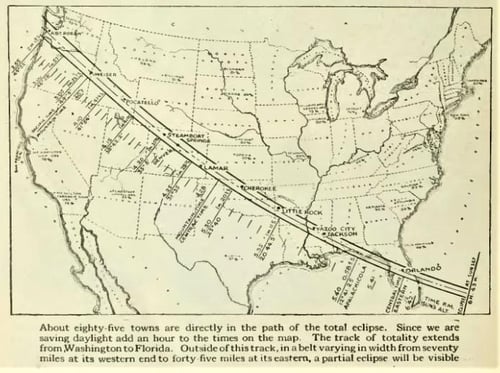 1918 Eclipse Map in Popular Science
1918 Eclipse Map in Popular Science
Georgia Marble In 1918
.jpg?width=490&name=1119px-Georgia_Marble_Company_quarry_near_Tate,_Georgia_(1911).jpg)
Georgia Marble Quarry ca. 1918
1918 was a difficult year for the nation being deep in the throngs of World War I and was an especially tumultuous, yet bustling, time for Georgia Marble. Thomas Brady, Jr, the son of Thomas M. Brady Sr. (a V.P. of the Georgia Marble Company) passed away at the young age of 32 serving his country in WWI. At the time Tom Brady, Jr was himself the vice president of his father's company, the Georgia Marble Company, before joining the military. He rose to the rank of lieutenant and was the first soldier from Cherokee County to die in the war. In his honor the American Legion Post in Canton, Georgia was named after him.
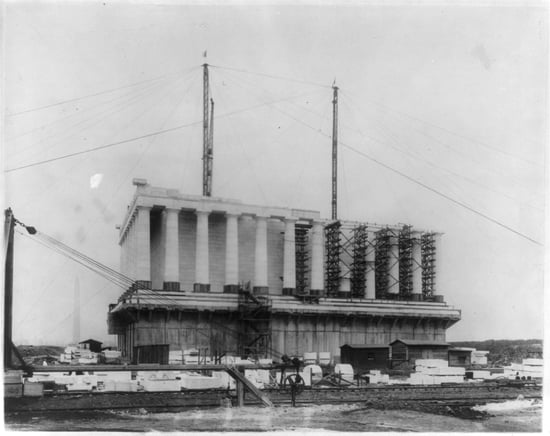 Lincoln Memorial 1918, National Park Service
Lincoln Memorial 1918, National Park Service
At the same time in 1918 all parties involved in the momentous construction of the Lincoln Memorial agreed that the statue of Abraham Lincoln would have to be doubled in size so that it would not appear lost in the building. Weighing 175 tons and carved from 28 individual blocks of White Georgia marble, it was determined that structural steel struts needed to be added under the floor to support the added weight from the larger statue. Talk about a change order! New blocks had to be sighted and extracted to fulfill the new size requirements.
This same Georgia quarry has also supplied the stone for sculptures beyond famed government memorials. Check out this modern piece carved from Georgia's special pink marble.
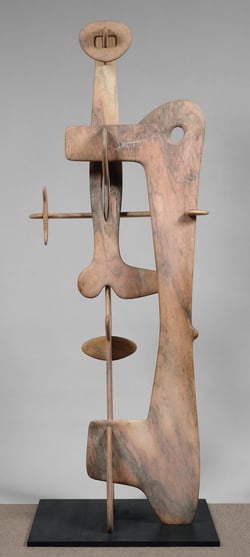 Kouros, Isamu Noguchi, Etowah Pink Georgia Marble
Kouros, Isamu Noguchi, Etowah Pink Georgia Marble
Born in America to a Japanese father and an American mother, famed modern artist and sculptor Isamu Noguchi spent the majority of his childhood in Japan before coming to the US to continue his schooling in 1918. He would later sculpt one of his masterpieces, “Kouros”, in Etowah Pink marble from the Tate quarry. The work is now on display at the Metropolitan Museum of Art in New York.
Quarry Total Eclipse 2017
.jpg?width=640&name=Eclipse%20(12%20of%2012).jpg)
Our other safety glasses
Fast forward 99 years to today and the quality of the marble deposit remains unchanged (in fact we estimate we've only tapped about 10 percent of the deposit). Thanks to technological advances we've improved our extraction and production methods, making this a zero waste quarry.
But the quality of our Georgia marble wasn't what we we're thinking about today. Today it was all about what was happening above the quarry.
Our whole Polycor Georgia Marble family was on hand today to witness the eclipse, trading their safety goggles for those crazy 3-D looking paper shades.
.jpg?width=640&name=Eclipse%20(10%20of%2012).jpg)
Those 2 minutes and 30 seconds were some of the most fascinating of our lifetime. And experiencing it all against the backdrop of the Georgia Marble quarry was what we’re calling the day the white marble turned (nearly) black.
.jpg?width=640&name=Eclipse%20(8%20of%2012).jpg)
Solar eclipses have historically been viewed as omens that bring about death and destruction, but thanks to our modern understanding of science we now know these dark events are harmless, that is except for the eyes. Hopefully there’s no blurred vision on the roads for the evening and morning commute. Enjoy these photos we captured in and around our quarry walls during the eclipse of 2017!
.jpg?width=640&name=Image%20uploaded%20from%20iOS%20(2).jpg)
.jpg?width=640&name=Eclipse%20(6%20of%2012).jpg)
The words of Samuel Alfred Mitchell, director of the Leander McCormick Observatory at the University of Virginia and leader of the U.S. Naval Observatory Eclipse Expeditions of 1918 sums up the experience so succintly: “Who is not interested in the total eclipse of the sun? He who has once seen such an eclipse can never forget it: the slow but graduate obscuration of the sun, the darkness covering the face of the Earth even at noontime, and the glorious sight that meets the eye during the few short minutes of totality.”
 Left to Right: Marie-Eve Gilbert, Matthieu Forget, Sylvie Beaudoin, Sharon Forcey
Left to Right: Marie-Eve Gilbert, Matthieu Forget, Sylvie Beaudoin, Sharon Forcey
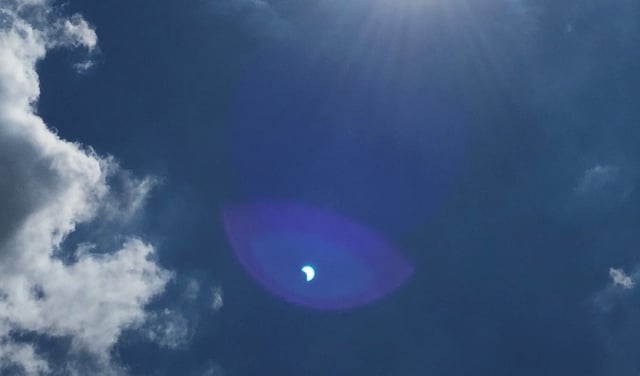
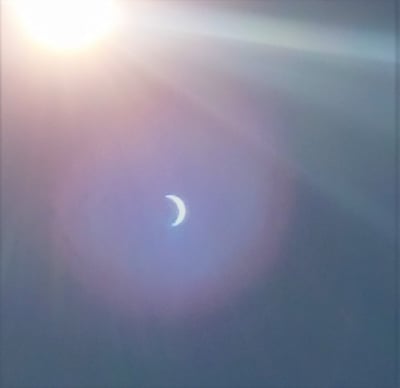
.jpg?width=640&name=Eclipse%20(9%20of%2012).jpg)
Tommy Heath
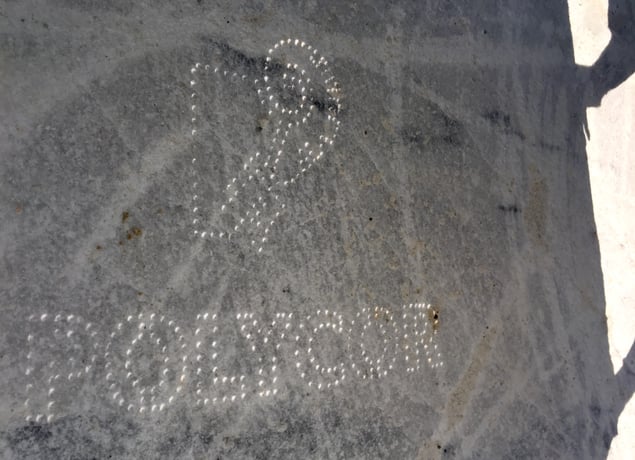
Eclipse pinhole box with mini-moon cutouts reflecting on Georgia Marble
Where did you view the eclipse? Share your story in the comments section.